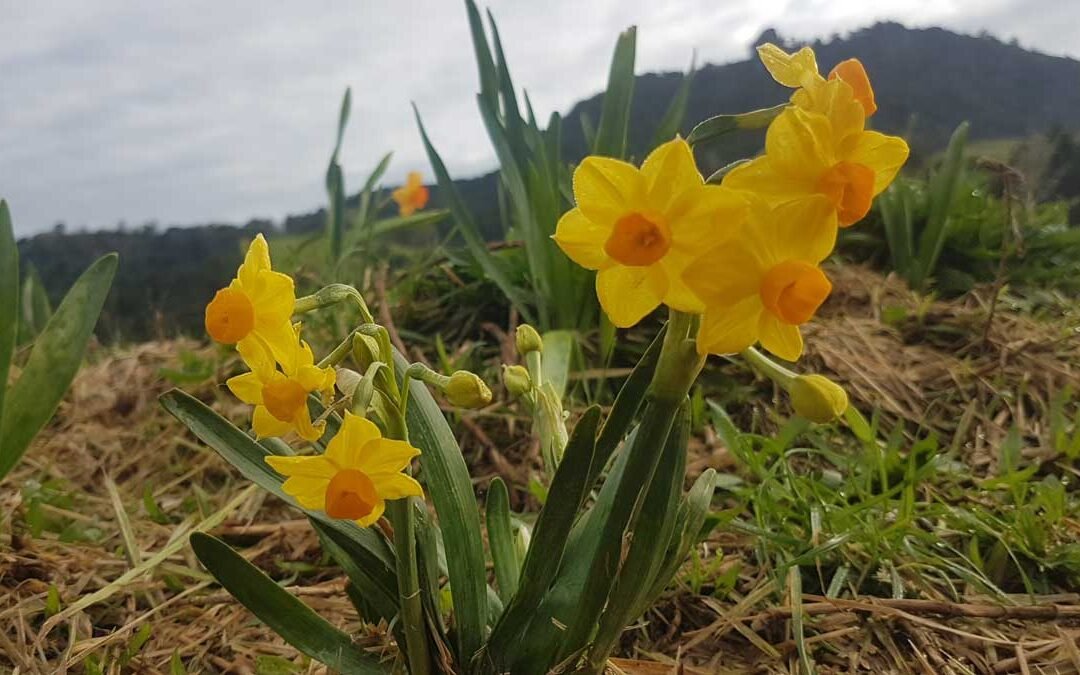My attention as a gardener has mostly been focused on growing food, and regenerating native environments. I know quite a bit about fruit, vegetables, and natives; but as it transpires, I have a number of gaps in my plant knowledge. One of the biggest holes has turned out to be flowers.
If the plant didn’t have a “purpose” such as food, medicine, fiber, timber, or ecosystem support, then I was a bit clueless about it. Flowers generally fell into a ‘not useful’ category in my brain. I just wasn’t very interested. There are some exceptions of course – I paid attention to flowers that attracted beneficial insects or had medicinal value – but in general, I ignored this entire area of gardening.
In a way, it made sense: up until fairly recently my physical space for gardening has always been limited, so I’ve focused on growing what I considered “important”. But with 10ha to play with at The Outpost, I can get more adventurous now.
I sometimes call my job ‘a masterclass in plant knowledge’. Every shift, I can be asked about any plant. For almost a year now, I’ve been hoovering up new information in order to keep up with my customers. Between the plant tags, the experience of my coworkers, and discussion with customers, I’ve learned buttloads. It’s expanded my appreciation for plants significantly. One of the things I’ve been delighted to learn along the way is that flowers can make me happy, simply by existing.

Last year, I planted a 50 mixed daffodil bulbs into a mound just outside our cabin beside the catnip swale. I planted them simply because I have always liked daffodils. For weeks in spring, I watched them flower and surprise me. I didn’t know so many kinds of daffodils even existed! They really made me smile. But they had no other ‘use’ except to make me happy (unless you count being a popular snail food as a use). I just liked them.
Recently, those daffodils have begun popping up again for a new year, and it gave me an idea. The surest way to learn about any plant is to grow it. And this little space right outside my front door could grow more flowers year-round. It could be my wee Garden of Smiles. Purely designed to put a smile on our faces when we go outside.
But it needed some work. It had grown over in the last couple of years. Originally, we’d pulled half a dozen random pineapples planted by the former owners from this mound. Then the ducks used it as a nesting site. Right now, the dogs like to collect toys and playfight there. I needed to transform it, and claim it.
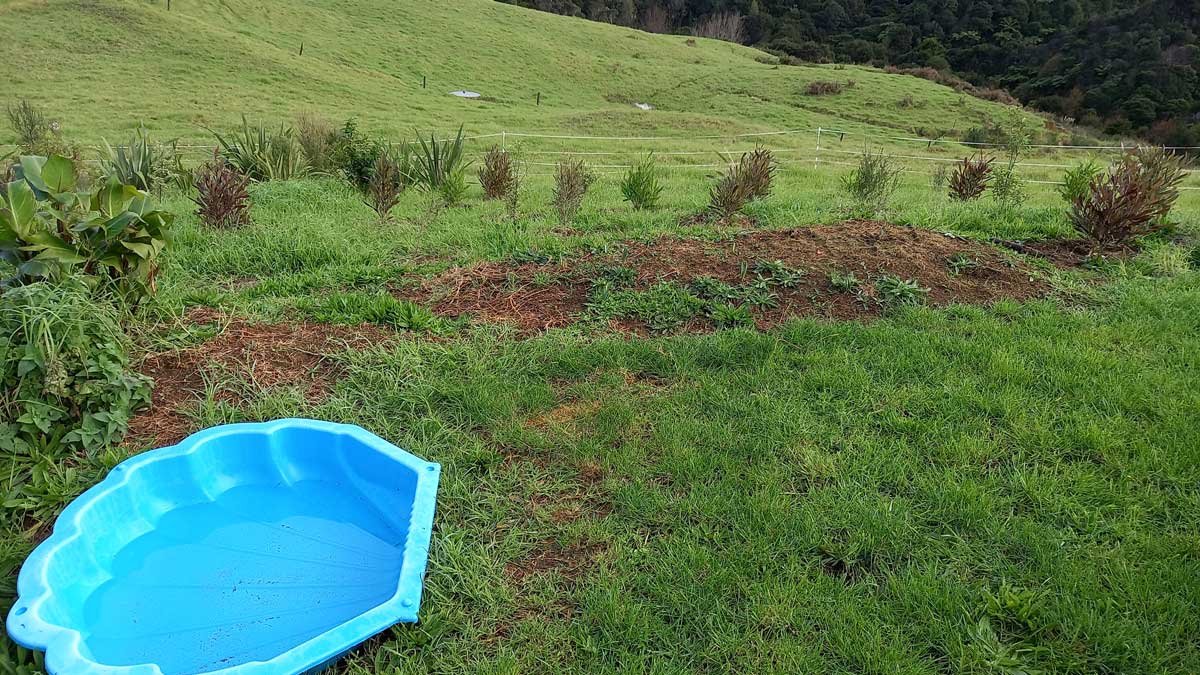

I started by weeding the bed with my trusty Wonder Weeder. Richard joined me by pulling weeds out from between the catnip. A morning of winter sun and three buckets of weeds later, it was cleared and I could see where my daffodils were.
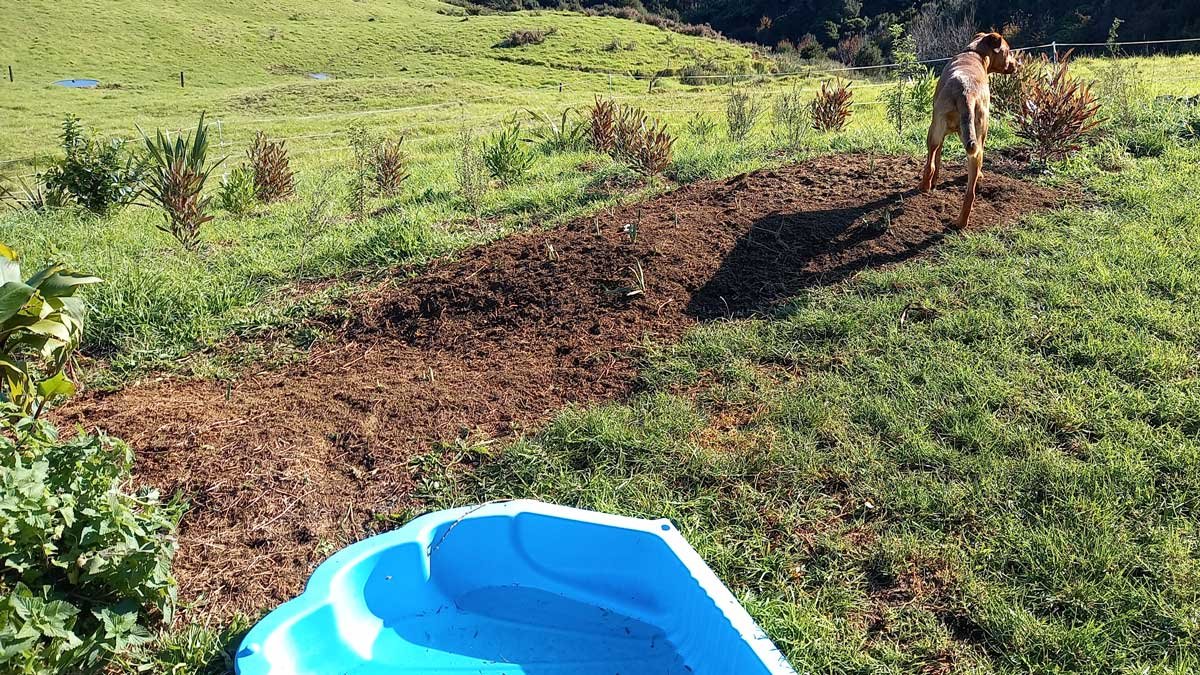

Then, I popped into work to pick up my plants. I grabbed some pansies and violas on clearance, as well as some polyanthus, stock, and primrose. I added a pack of 20 mixed tulip bulbs, a couple of bags of compost, and some garden mulch.
We bought it all home and got to work, starting with building up a dip in the middle of the bed. This had originally held a big piece of wood salvaged from another part of the property, but I have other plans for the wood. Either way, this spot contained no daffodils, so I used a mixture of compost and topsoil to level it up. I began by planting out some flowers that needed to leave my nursery area.
I picked up a couple of tiny fuchsia plants on clearance last year just because I liked them. They made me happy when I saw their dancing flowers. I put them into larger pots and was delighted when they flowered for me over summer. But they would make me happier at my front door step. They went into the back of the bed.
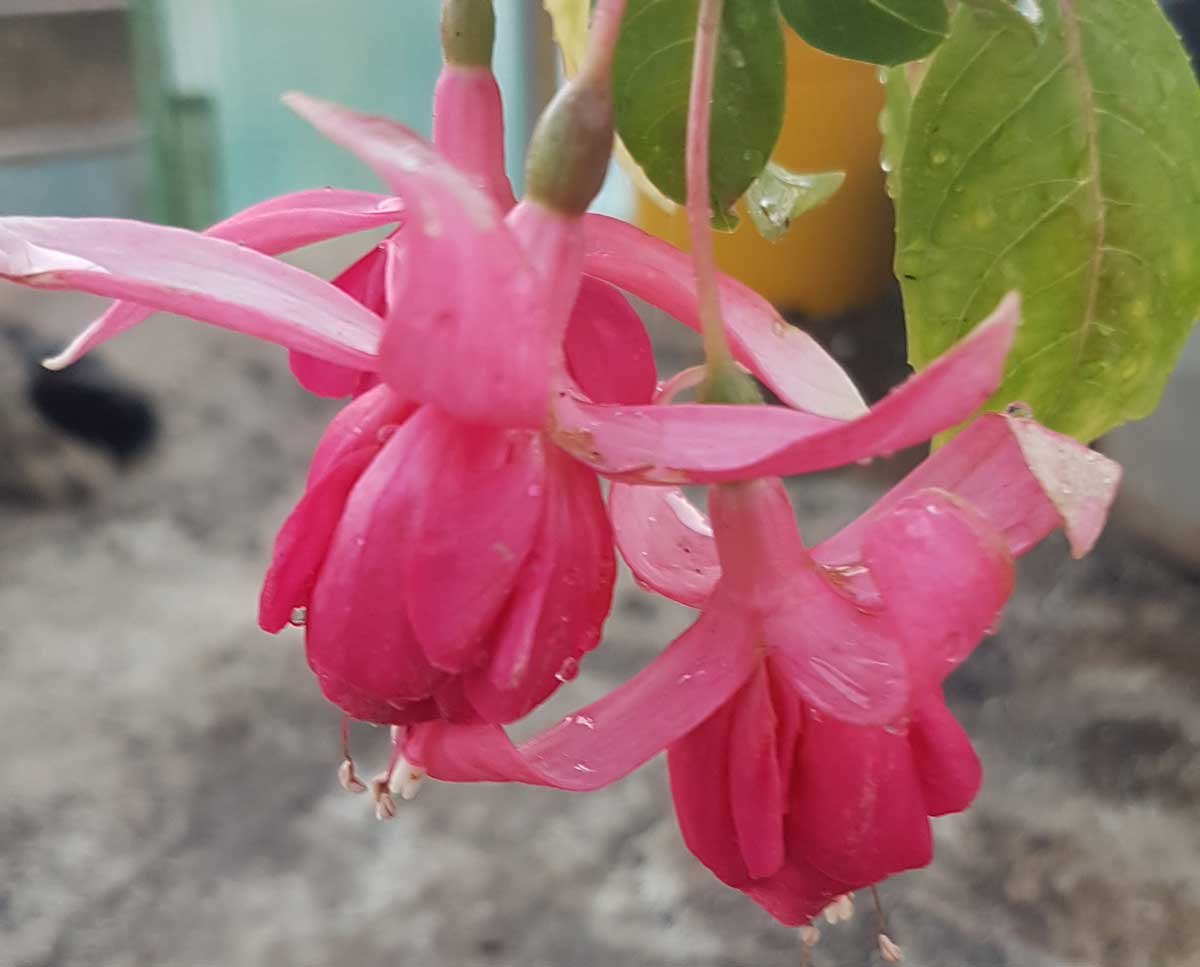
And years ago, I picked up some Canna edulis bulbs on TradeMe. I’ve written about them before. They’re both a flower, and a food source better known as ‘arrowroot’. But I’d never found quite the right spot, so they’d just sat in their pots.
Next to the flower bed is a patch of existing myoga ginger planted by the former owners. It has a similar leaf and environmental requirements. It’s done OK in that position for years. So the cannas went in behind the ginger.

Next, I scattered my cheap annuals and tulip bulbs in the gaps between the daffodils. Twice, I went to dig a hole and found a daffodil that hadn’t quite made the surface (oops).
There is no design going on here. It’s entirely random chance. I specifically chose mixes of seedlings and bulbs so I can’t design it. This garden is entirely made of surprises. I just want a colourful bed that brings me some joy, for no other reason but joy.
After getting all my plants in, I left it for the day. Big mistake. The next morning I came back to find they had a bit of a rough time. A tulip bulb had been thrown out. A couple of stock were unsavable. Some pansies (or maybe viola) had been ripped out, and polyanthus buried. One of the dogs had been digging. So I saved what I could save, and got to work adding a layer of compost, followed by a layer of mulch.
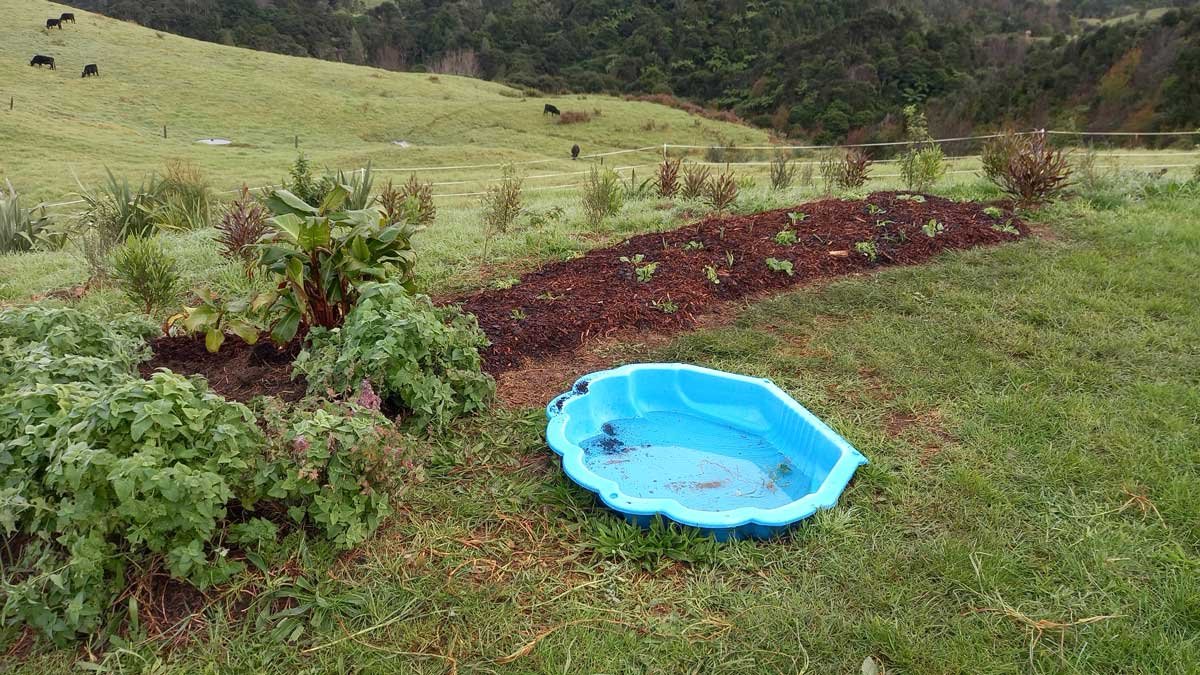
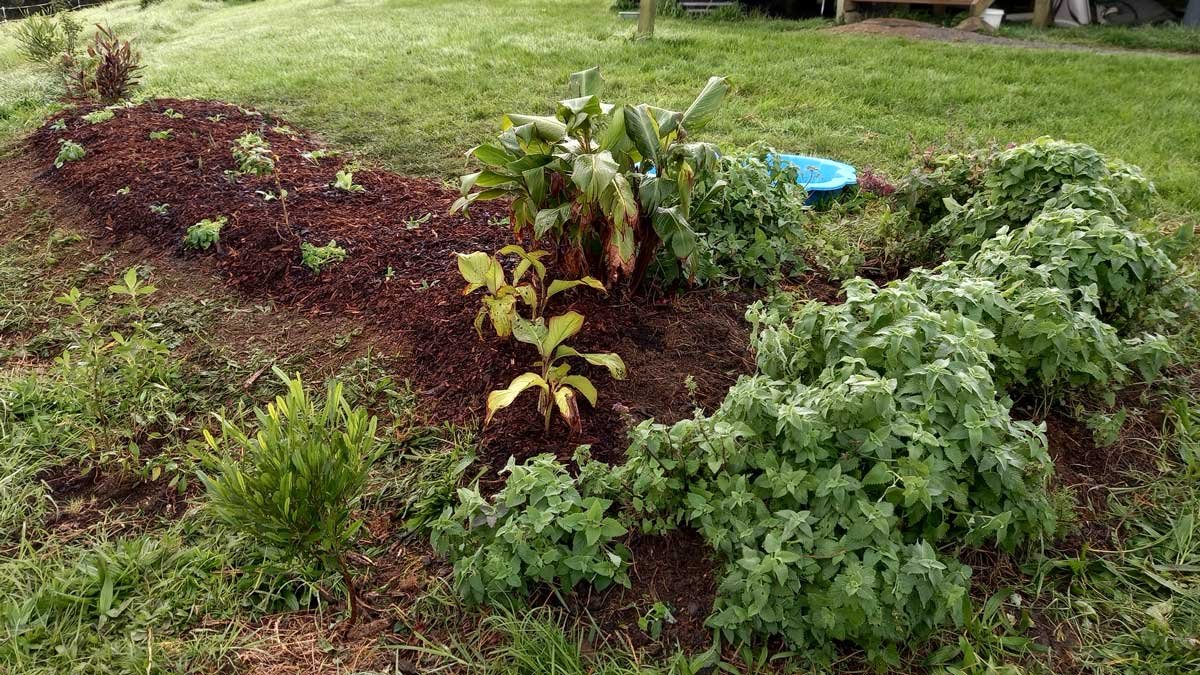
Finally, it was time to fence it. Hopefully once the bed is in full flower and the plants are settled in, I’ll be able to remove it. But a quick standard and string fence will keep the dogs off, and my work safe for now.
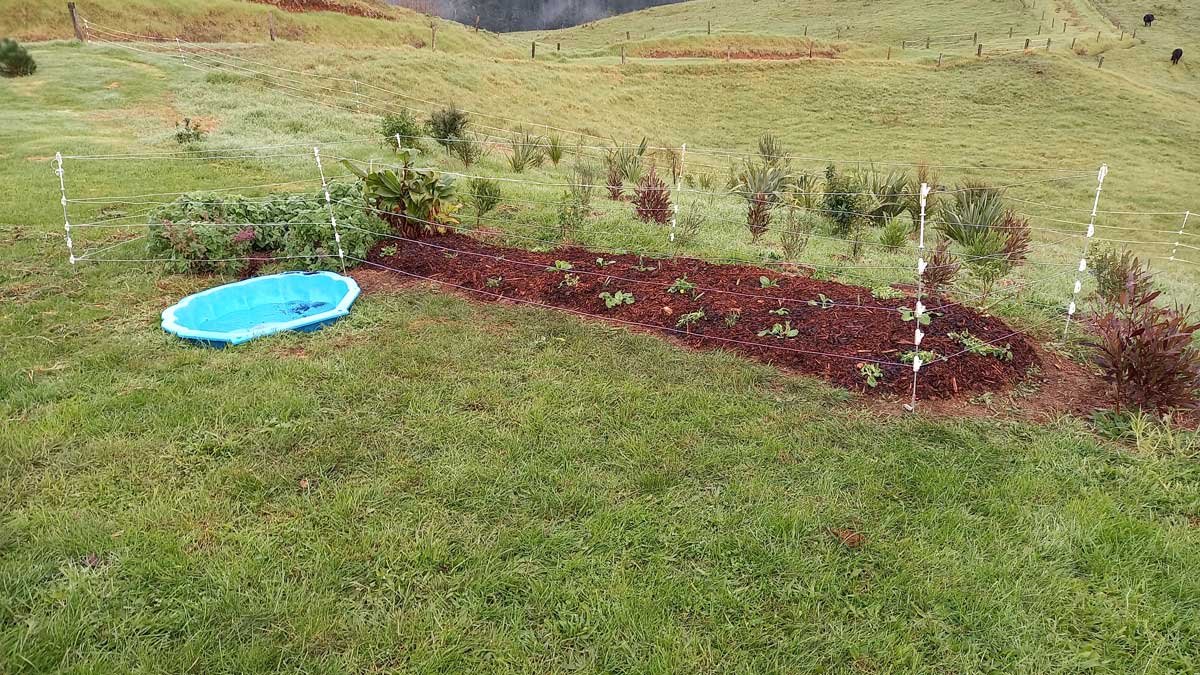
I have no idea what this bed will look like when everything’s flowering, but I do think it’ll make me happy. It already fills me with a satisfaction, and the plants are barely in the ground, let alone flowering. As time goes on, I’ll probably attempt to fill it with bulbs to flower year-round, and pick up cut-price annuals to fill the gaps as the seasons change. Hopefully we’ll get to the point where the colours are on display right throughout the year.

